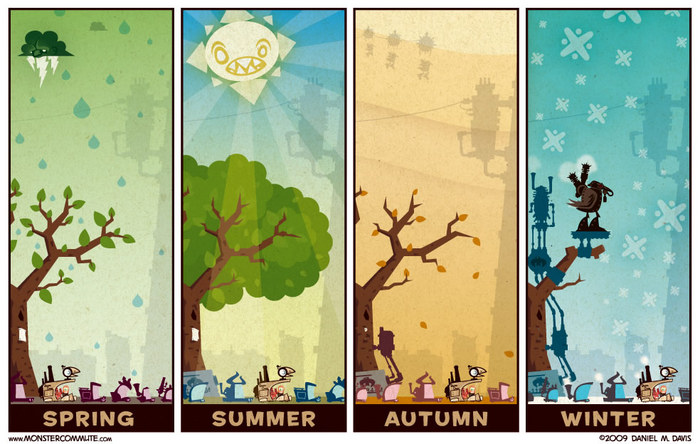Research shows how humans see different colours in different seasons
The scientists at the University of York decided to discover an explanation for why this is so.
The study has come up with new information regarding processing of colors and particularly examines how one processes the color unique yellow.
Even though this study does not offer a cure or treatment for some disease Welbourne believes that the more scientists learn about how vision and color is processed the better they can understand how humans perceive the world. Those four colors are green, blue, red and yellow. In spite of the fact that different people see colors differently and frequently disagree on what real green, real blue and real red look like, they agree on what real yellow is.
Unique yellow is one of the most stable colors across populations. Could this be connected to the colors in the environment surrounding us or does this have anything to do with the biology of our eyes?
Graphene takes infrared rays and translates them into electrical signals.
“In York, you typically have gray, boring winters and then in summer you have greenery everywhere”, Welbourne added. The human visual system compensates for these changes, and as a surprising, yet direct result of this process, what we think “real yellow” looks like changes along with the seasons. “It’s a bit like changing the colour balance on your TV”.
She told MailOnline: ‘The shift we see in the unique yellow settings in the summer is towards shorter wavelengths – i.e. towards a more “greenish” yellow.
The study involved the testing performed on 67 men and women in the months of January and June.
The subjects were guided into a darkened room, given the proper time for their eyes to adjust to the change, then presented with a machine known as a “colorimeter” and asked to adjust the dial forward and backward until they felt that they were looking at a “real yellow” that had no traces of red or green.
Researchers hypothesized that human consensus on yellow might be inspired by seasonal changes, not necessarily biology.
As a vision scientist herself, Welbourne finds the conclusions fascinating and considers them to be very informative on how visual processing works. “This can have knock on effects on the way we diagnose and treat visual disorders”.
The research offers insight into the complexity of the visual system being an example of how humans adapt to their surroundings constantly. Participants continued to agree, but their interpretation changed with the seasons.








